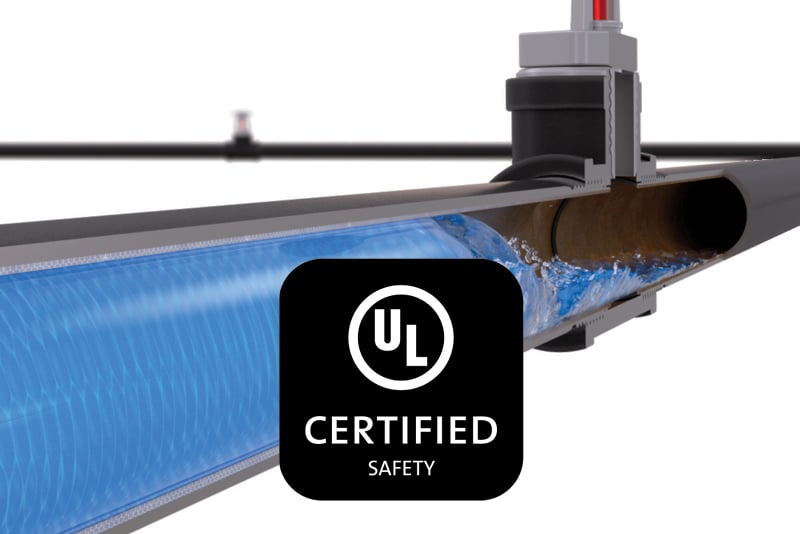Get the knowledge needed for inspecting fire sprinkler systems with listed antifreeze
The information here is accurate as of June 3, 2025
Knowing what’s included in NFPA 13 and 25, what the differences between listings are and how to inspect a system with listed antifreeze are the keys to conducting a successful listed antifreeze inspection and ensuring compliance.

Fire Sprinkler System Listed Antifreeze Inspection
There are three key actions in a quick, thorough inspection of an antifreeze fire sprinkler system: glance, look and check.
- GLANCE: First look at the hang tag’s general condition. If it looks old, worn, or well-written-on, the system is almost certainly still filled with legacy antifreeze, which must be replaced. A missing hang-tag is a major red flag.
- LOOK: Next, look at the hang tag to see if its form and content meet NFPA 25 specifications 4.1.9.1 and 4.1.9.2 (a permanently marked metal or rigid plastic information sign including location served, auxiliary drains, location of antifreeze and location of heat tape) and 4.1.10 (an antifreeze information sign indicating the manufacture type and brand, concentration by volume and volume of solution).
- CHECK: Finally, use freezemaster antifreeze’s installation guide to confirm that the listed antifreeze used is compliant with the building’s occupancy and pipe materials. Remember that each listed antifreeze product has a unique listing. Keeping the installation guide on your device will let you quickly inspect compliance.

Not All Listed Antifreeze is the Same
Listed antifreeze must pass performance standards as tested by an agency like UL. But just like with sprinkler heads, listings will vary among antifreeze brands.
The most critical differences in listings that AHJs should watch out for are:
- Minimum use temperature: Does the solution provide adequate freeze protection for the space?
- System volume limitations: An antifreeze's listing limits how much antifreeze can be used in a single system depending on the application. Always reference the brand's installation guide or TDS for its volume allowances.
- Minimum pressure requirements: Listed antifreezes go through rigorous testing to ensure they can safely and effectively suppress a fire. Many listed antifreezes require a minimum pressure (typically 20 psi) at the most hydraulically remote sprinkler.
- Compatibility with system materials: Make sure the antifreeze has been tested with and is listed for use other materials in a system like the piping type and the material that makes o-rings and clappers.
AHJs should be willing to work with other AHJs and with ITM contractors to find the best solution for each case. And Lubrizol is also here to help – the freezemaster™ antifreeze team can consult as needed and can answer all AHJ questions.

About freezemaster™ Antifreeze and NFPA 25
- Antifreeze Solution Requirements per NFPA Standards
- Blog Post: “Fire Sprinkler System Antifreeze Dangers Led to NFPA 25 Revisions”
- freezemaster™ Antifreeze Loop Video
- The Importance of Corrosion Protection in UL-listed Antifreeze for Fire Sprinkler Systems
- Blog Post: “Freeze Protection Technology Like No Other”




